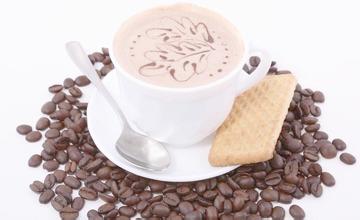Antigua Coffee Flavor taste Manor production area introduces Antigua boutique coffee beans
Like all Guatemalan boutique coffee, Antigua coffee is grown in shade. In Antigua, shade is mainly used to protect coffee trees from frost, which is cold and sometimes frosty from December to February every year. Dense shade and extremely shallow aquifers work together to create a unique micro-climate for the coffee trees living in it.
Cup reviews of Antigua coffee:
Aroma 7.8; flavor 7.85; acidity 7.95; balance 7.63; overall 7.78; alcohol 7.85; aftertaste 7.60
Delicate, well-balanced, rich aroma and excellent sweetness, fertile volcanic soil, low humidity, plenty of sunshine and cool nights, all of which make Antigua unique.
The three majestic volcanoes Agua, Acatenango and Fuego surround the Antigua Valley. Every once in a while, Fuego-- one of Guatemala's three active volcanoes adds fresh, mineral-rich ash to the soil of Antigua. The volcanic pumice in the soil can keep the soil moist, thus greatly making up for the lack of precipitation in Antigua-Antigua is the least precipitation of the eight coffee producing areas in Guatemala. Antigua has a very high pumice content (from the active Fuaigo volcano Fuego), which keeps the humidity stable at 65% all the year round, which is very different from other volcanic coffee producing areas. The humidity in other volcanic areas usually varies greatly between the dry and wet seasons, and most coffee trees are planted in the hinterland of the valley, even though they are already 5000 feet above sea level. In addition, some farmers grow coffee on the slopes of the volcano, and the Antigua producing area is a closed valley nearly 5600 feet above sea level, surrounded by three volcanoes: Agua, Acatenango and Fuego. Antigua is flat and slightly sloping, unlike other coffee producers in volcanic regions. The Antigua Valley is one of Guatemala's oldest and best-known coffee producing areas. Volcanoes and extremely shallow groundwater tables form a dry microclimate, which is characterized by low humidity, adequate sunshine and cool nights.

Important Notice :
前街咖啡 FrontStreet Coffee has moved to new addredd:
FrontStreet Coffee Address: 315,Donghua East Road,GuangZhou
Tel:020 38364473
- Prev

Introduction of varieties and brands in Bali coffee producing area Kopi Luwak introduction to Bali Kopi Luwak
The coffee comes from the excrement of an animal called the civet (commonly known as the civet in Indonesia). Although it comes from smelly poop, it is full of sweetness and a burst of indescribable sweetness. This wild musk cat likes to eat fat, pulpy coffee fruit, but the hard hard nut (raw bean) cannot be digested. It is excreted with feces and becomes Kop after cleaning.
- Next

Taste smooth Mexican boutique coffee bean flavor manor area introduces Mexican coffee brands
For Mexican coffee, of course, we can not ignore the existence of high-quality coffee, many coffee farms are constantly improving their own planting, harvesting, and processing technology. I drank this Mexican, ground dry aroma with refreshing herbal and nutty aromas. It has a medium mellow thickness, low acidity, sweet and sour red berries, smooth, clean and mild taste and a long finish.
Related
- Detailed explanation of Jadeite planting Land in Panamanian Jadeite Manor introduction to the grading system of Jadeite competitive bidding, Red bid, Green bid and Rose Summer
- Story of Coffee planting in Brenka region of Costa Rica Stonehenge Manor anaerobic heavy honey treatment of flavor mouth
- What's on the barrel of Blue Mountain Coffee beans?
- Can American coffee also pull flowers? How to use hot American style to pull out a good-looking pattern?
- Can you make a cold extract with coffee beans? What is the right proportion for cold-extracted coffee formula?
- Indonesian PWN Gold Mandrine Coffee Origin Features Flavor How to Chong? Mandolin coffee is American.
- A brief introduction to the flavor characteristics of Brazilian yellow bourbon coffee beans
- What is the effect of different water quality on the flavor of cold-extracted coffee? What kind of water is best for brewing coffee?
- Why do you think of Rose Summer whenever you mention Panamanian coffee?
- Introduction to the characteristics of authentic blue mountain coffee bean producing areas? What is the CIB Coffee Authority in Jamaica?

